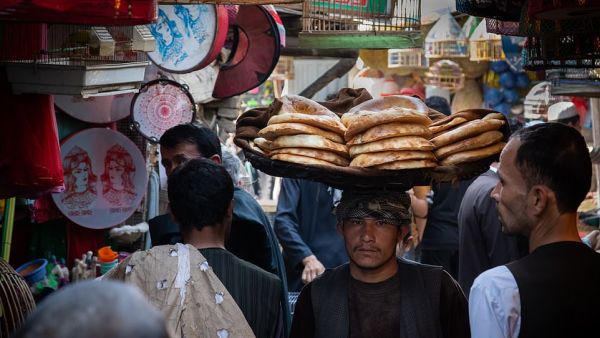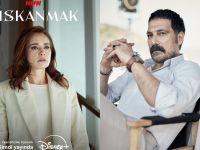Dutch photographer Thijs Broekkamp undoubtedly risked his life to take these pictures.
They show everyday life in Afghanistan - jolly traders, children playing in mosques, commuters lost in thought - innocent scenes that stand in stark contrast to the horrifying images that make the headlines.
But still, Broekkamp stresses that for Westerners it's 'near impossible and very dangerous to travel by yourself' there and neither he nor his guide told anyone about his itinerary - not even the police.
His surprising images, taken last September as part of a trip exploring central Asia, show a range of scenes, from the busy streets and bustling markets of Kabul to the stunning Blue Mosque in Mazar-e-Sharif and a traditional tile factory in Herat.
He entered the country by flying into Kabul and explored the capital for several days before visiting the cities of Herat, Mazar-e-Sharif, the surrounding provinces of Balkh and Samangan, and the Pansjhir Valley.
Thijs travelled around with an Afghan guide.
The pair dressed in local clothing in order to keep a low profile, stayed in local, small hotels and, as mentioned, kept their movements a closely guarded secret.
But despite the risks, Thijs was desperate to visit the country.
He told MailOnline Travel: 'For Afghanistan, I wanted to show that life still goes on despite the war and give a face to the people behind the war.
'This project focuses on the daily life here that is unbeknownst to many of us. I wanted to approach the country from a positive side.'
What surprised Thijs most about the country was how normal life just carried on - despite it being a war zone.
He said: 'I had not been to a country that is in this kind of situation before, but in a war zone I kind of expected everything to be in ruins and life completely coming to a halt.
'But life just continues. People are going to their work and trying to get by and not sit around and feel miserable and mope all day about their situation.
'I sort of knew it in the back of my head but the images you'll see in the media are almost exclusively about the war and terrorism so it is hard to imagine something else.
'What also surprised me is that quite a few people could speak a few sentences of English, better than all the other Central Asian countries I'd been to.
{"preview_thumbnail":"https://cdn.flowplayer.com/6684a05f-6468-4ecd-87d5-a748773282a3/i/v-i-1…","video_id":"159b32f0-dfa7-43ed-93db-d2fc8b0b1b30","player_id":"8ca46225-42a2-4245-9c20-7850ae937431","provider":"flowplayer","video":"Trump to Impose More Sanctions on Iran"}
'The young generation often approached us on the streets and asked me where I'm from and what my name was. Some were glad to practice their English and they were extremely interested and curious.
'They were very happy that I came to visit just to see and learn about their country. Mostly the Westerners they encounter are either the military or diplomats coming to their country for political reasons.
'I really enjoyed visiting the mosques like the Blue Mosque in Mazar-e Sharif and the bazaars like the Kabul bird market. They seemed places that are removed from all the turmoil of war. I felt here I could observe how normal life without war would be.'
One of his favourite pictures is that of a mother carrying her child at the Blue Mosque.
He said: 'It is an innocent and peaceful picture, strengthened by the light tones and vivid colours. There is no war here. The child is sleeping, seemingly carefree.
'There is the incredible architecture of the mosque and a woman walking without a burqa. She walks into the light, into the sun, hopefully a metaphor for better times ahead.'
But despite this being his favourite image, Thijs admits very few of his images feature women.
He explained: 'You'll see that there are almost no women in the photographs. It is not that they are not there, but they generally don't want to be photographed, especially by men.
'I know of female photographers who have taken amazing pictures of Afghan women, after investing lots of time to get close with them.
'My idea for this project was to improve the image we have of Afghanistan as a country of war-lusted cavemen who are all terrorists. This is just a start, just something to begin with in improving that image.
'It is easy to immediately start pointing out everything that is wrong in the country, especially when you compare it to the Western countries we live in. This is not the point of my project nor is it helping.
'It is also not fair to compare them to ours and you have to respect that they are completely different cultures, where all progress has been halted and turned back many steps since the invasions and wars from 1979 up until this day.
'I find it a bit disrespectful to immediately jump to conclusions and label those societies backwards. Some people in the West are quick to consider our own values as the best and judge any society that is not living by these values.
'You may not agree with everything in their culture. Let's start by acknowledging and recognising that beautiful things that can be found in this country. That there are smiles to be found. And work from there.'
The images captured by Thijs in Afghanistan are now set to go on display at an exhibition in Paris.
He is also working to set up a Dutch foundation to support the Afghan Mobile Mini Circus, which helps Afghan children deal with the trauma of war through the arts. The photographer hopes he will travel back to Afghanistan soon.
He explained: 'The Afghans are a proud and strong people, who have suffered immensely as a play ball between religious extremism and foreign forces operating in their country. They too deserve a chance for peace and to reconnect with the world.'
This article has been adapted from its original source.








